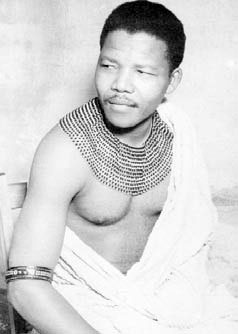We invite you and your friends to join us for the opening of
Africa Revisited: Beadwork Dialogue in African Art
Featuring a beautiful selection of South African work including Ndebele aprons dating from the mid 20th century from the private collection of Susan Drerup along with a spectacular collection of beaded items from across Africa.
The exhibition will also include an overview of artefacts, jewellery & textiles from the diverse collection at Sidewalk Gallery Hobart.
Susan Drerup will introduce the exhibition and talk about the culture, and traditional beadwork of the people of her homeland. Susan’s interest in the work of the Ndebele people began as a young woman living in South Africa. Her knowledge of the culture of the region is extensive.
Preview 10am Thursday May 7th
Official opening 6 - 8pm
at
Glen Eira City Council Gallery
cnr. Glen Eira and Hawthorn Roads, Caulfield.
Monday–Friday 10am-5pm
Weekends and public holidays 1pm–5pm
Last day Thursday May 21st 2009
(13th annual touring exhibition of African Tribal Art from Timbuctoo to Tasmania)
If you can't make the exhibition in Melbourne, why not visit the gallery in Hobart? Matthew Denholm, writing for The Australian certainly thinks that Sidewalk Tribal Gallery is is one of the best reasons for visiting Tasmania!
 Exhibition Invite
Exhibition Invite
 Exhibition Press Release
Exhibition Press Release
Following Melbourne the exhibition opens in Hobart on June 21st
A selection of images of items featured in the exhibition, for more images visit out pages on Flickr.
In a modern western world beadwork survives at the edge of the decorative arts surfacing occasionally, as a craft, with the ebb and flow of fashion. The significance of the assembly and wearing of beaded design is rarely acknowledged in our cultures. In the history of mankind the value of this craft was not always so frivolous. The desire for personal adornment appears to be universal. Evidence found in Stone Age graves and domestic sites includes objects that are recognisable as jewellery. Ivory beads, necklaces made from fish vertebrae, and other objects are frequently uncovered in such locations.
The most extensive evidence of early bead production and use has been found in Africa. The oldest beads that have been discovered on the continent are drilled ostrich egg shells from southern Africa that have been dated to the Middle Stone Age (280,000 to 45,000 years ago) and perforated shells from northern Africa that are 80,000 years old. In addition to ancient beads, prehistoric paintings of humans wearing elaborate beadwork adornments have been discovered on cave walls in Southern Africa and the Sahara Desert. Among the earliest items used for domestic and religious purposes and body adornment, beads are some of the first material signs of symbolic thought, an indicator of modern human behavior.
African beadwork not only serves as decorative jewellery but as a complex introduction into the colourful web of traditional life. Outward appearance is the surest way to differentiate one person from another. Wearing distinctive apparel and adornments conveys specific personal and social information. Indeed, the physical expression of a culture is made as evident through ornament and dress as it is through ritual and ceremony. The form of decorative objects depends, of course, on the materials at hand. Historically, these were either local products or things acquired in trade. So it is with the beadwork of Africa.
Beads have become powerful elements in African life. Their use offers insight into hundreds of cultures. The jewellery worn by East Africa's Massai and Samburu people incorporates specific and different patterns, forms, and shapes. But both use the same basic building blocks: tiny glass or porcelain beads. The Zulu, Ndebele, and Xhosa of South Africa also use these small beads to create culturally distinctive forms of jewellery. Ornament literally is used to delineate the unique identity of each culture, and most of the beadwork found in eastern and southern Africa is worn by all members of society. But in West Africa, in the Yoruba culture of Nigeria and Cameroon, beadwork is reserved for members of royalty.
 Nelson Mandela wearing a beaded collar. The photograph was released by the ANC during the 1960's. Images of Mandela were banned by the apartheid government. This and others were only made public in 1990. This was published in Ezakwantu: Beadwork from the Eastern Cape.
Nelson Mandela wearing a beaded collar. The photograph was released by the ANC during the 1960's. Images of Mandela were banned by the apartheid government. This and others were only made public in 1990. This was published in Ezakwantu: Beadwork from the Eastern Cape.
Curator and collector of the exhibition, Ann Porteus, has traveled extensively in Africa. The exhibition includes objects from her travels as well as a beautiful selection of South African beadwork dating from the 1960’s and collected by Susan Drerup. Included are many aprons from the Ndebele people and various items from the Zulu and other groups. A feature of Susan’s collection is a beaded collar (Mfengu - Thembu - Xhosa "Ithumu") very similar to that worn by Nelson Mandela when he dressed in traditional attire at his sentencing in 1964. An example of adornment being used to send a message of defiance and pride in identity.
The art of African beadwork amongst the Xhosa speaking people of the Eastern Cape, South Africa, had almost completely died by the late 1960’s, which makes the limited number of pieces available particularly valuable. It is possibly the most comprehensive collection of this type exhibited in Melbourne. Since opening in 1989 Sidewalk Gallery has evolved to become Australia's largest collection of antique and traditional African artifacts representing more than 85 separate cultures collected from 26 countries across the continent.
Ann has been working with African art for more than 26 years and gained her knowledge in the field, from research and contact with the people in their villages.
Africa, its culture, art and people are her passion and along with an amazing selection of tribal and ethnic jewellery imported from around the world the show adds a diversity rarely seen in a single collection. The gallery has built a reputation for its honest and fair dealings with the villagers and traders across Africa and is also acknowledged and respected throughout Australia and among international collectors. More than 40% of African art sales are now shipped to Europe and the Americas. It will be exciting to see more pieces remaining in Australia to help build a solid base of high quality African traditional arts for future generations of Australians to enjoy.
Ann travels to Africa each year, sometimes twice, visiting villages and traders in 15 countries looking for a unique variety of different collectable art in an attempt to represent as much as possible of the art of the African continent. Almost 20% of her time has been spent traveling in Africa during the past 16 years.








![Beaded Apron - Ndebele - South Africa [#0715]](/images/beaded-2009/beaded-apron-0715-ndebele-south-africa_t.jpg)
![Beaded Apron - Ndebele - South Africa [#0719]](/images/beaded-2009/beaded-apron-0719-ndebele-south-africa_t.jpg)
![Beaded Apron - Ndebele - South Africa [#0721]](/images/beaded-2009/beaded-apron-0721-ndebele-south-africa_t.jpg)
![Beaded Apron - Kirdi - Cameroon [#4846]](/images/beaded-2009/beaded-apron-4846-kirdi-cameroon_t.jpg)
![Beaded Apron - Kirdi - Cameroon [#4856]](/images/beaded-2009/beaded-apron-4856-kirdi-cameroon_t.jpg)
![Beaded Apron - Kirdi - Cameroon [#4864]](/images/beaded-2009/beaded-apron-4864-kirdi-cameroon_t.jpg)
![Beaded Skirt - Kirdi - Cameroon [#4894]](/images/beaded-2009/beaded-skirt-4894-kirdi-cameroon_t.jpg)


